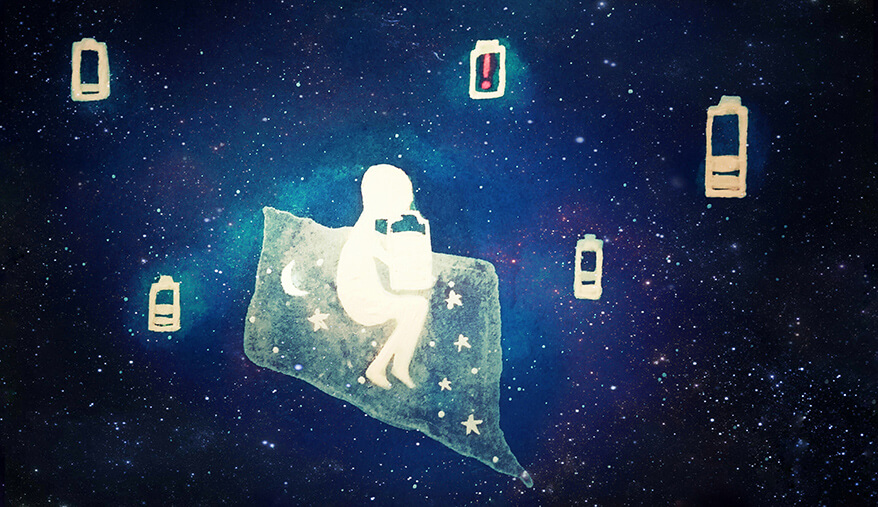Construction and Working of Lithium Ion Battery Research
Dec 09, 2019 Pageview:3825
What is the construction of lithium ion batteries?
Lithium-ion batteries are made from what are called cells. Every cell of those is composed of three components; a positive electrode, a negative electrode, and a chemical component called an electrolyte between the positive and negative ones.
The positive electrode in the cell is designed from Lithium-Cobalt oxide. The negative electrode is designed from graphite. The electrolytes are such as oxides and sulfides. The electrolyte must have a long shelf life and offer high mobility for Lithium ions. The electrolyte can be liquid, polymer, and solid-state ones.
How does a lithium battery work?
Lithium-ion batteries have the same working mechanism. When the battery is being charged, the Lithium-cobalt oxide "the positive electrode", gives some of its lithium ions, these ions move throughout the electrolyte to the negative electrode "the graphite" and subside there. The battery during this process store energy. After the charging process and during discharging; the Lithium-ions move back across the electrolyte from the negative electrode to the positive once again, which in turn produces energy that powers up the device the battery is attached to.
Unlike conventional batteries, Lithium-ion batteries have built-in electronic controllers. These controllers regulate how the batteries charge and discharge. These controllers prevent overcharging and overheating that can cause Lithium-ion batteries to explode in some cases.
During the charging and discharging process in the Lithium-ion batteries, electrons flow in the opposite direction of the movement of the ions around the outer circuit. It is important to note that electrons do not flow throughout the electrolyte itself. The electrolyte is effectively an insulating barrier and it does not affect the movement of the electrons.
Ions movement throughout the electrolyte and electrons moving around the external circuit in the opposite direction are two interconnected processes. If either of these movements stops the other stops too. When the battery is completely discharged and ions stop moving through the electrolyte, the electrons stop moving at the same time through the outer circuit. That is why you lose power in your device.
Discharging happens at a large rate when the device powered by the Lithium-ion battery is on; however, discharge also occurs even when the device is powered off. That is one downside for the Lithium-ion batteries.
To summarize how Lithium-ion works, it is as follows:
During charging, lithium ions flow from the positive electrode to the negative electrode throughout the electrolyte.
Electrons also flow from the positive electrode to the negative electrode around the outer circuit.
Electrons and ions combine together at the negative electrode and deposit lithium there.
When no more ions are present to flow, the battery is then fully charged and ready to be used.
During the discharging process, the ions flow back through the electrolyte. Flowing back from the negative electrode to the positive electrode. The electrons flow from the negative electrode to the positive one but throughout the outer circuit. This process is what provides power to your device.
When all of the ions inside the battery are moved back, then the battery is completely discharged and it needs to recharge once again.
How do you make a lithium ion battery?
Creating a Li-ion battery follows some simple steps:
Electrode Preparation
In this step, the material that will be coated on the anode and the cathode is mixed and prepared.
Raw metallic materials, mostly aluminum, is loaded into the coating machine.
Thin layers of Lithium and Carbon are then applied and added to the machine.
Through a continuous process, the material is fed to an oven where Carbon is being treated.
After the oven process, the product is fed to two separate lines where the anode and the cathode are being fabricated each having its own line.
After the electrodes (anode and cathode) are fabricated, they are fed to a machine where they are being squashed to thin layers so that they can be more foldable.
The final step of this process is the cutting process where the electrodes are cut to the proper width specified by the manufacturer.
Electrode Creation
In this process, the electrodes are taken and rolled to the proper size.
Once the anode and cathode are cut to the perfect size, they are matched together in pairs of exactly equal sizes.
After that, a thin layer is inserted between them (the separator).
The whole three layers (the anode, the cathode, and the separator) are folded together in a semi-automatic machine.
Electrolyte insertion
After preparing the electrodes in the previous step. Housing for them is made.
Plastics or PVC materials are used to make the housing for the electrodes.
The electrodes are then inserted into those housings.
They get thermally welded together on three sides, while the fourth side is left open.
Via the open side, the electrolyte is inserted onto the whole setup.
After that, the open side is sealed.
Now you have a Li-ion battery that is ready for its first charge.
There are, however, some challenges that face the manufacturing of the Lithium-ion batteries industry. The cost of manufacturing Li-ion batteries on a large scale is so high it prevents manufacturers from seeking this dream more quickly.
If we look at the automotive market and electric vehicles, the cost of lithium-ion batteries is much higher than what that market could accept. It is high to the point that electric vehicles have not reached the point to replace conventional cars just yet. They are still more expensive.
Cost reduction is possible through something called the optimization of manufacturing schemes.
Another thing for cost reduction is the replacement of the NMP electrolyte inside the li-ion batteries with water. The cost of water as a solvent is negligible when compared to the NMP compound. Moreover, water is not flammable nor it has any flammable fumes, which makes it the safer choice than the NMP. The problem that faces the manufacturers with water is that water is a polar solvent, and what is needed in the battery is a non-polar solvent like the NMP. However, making water a non-polar solvent can be done via some chemical reactions and additives to it.
Researches are now focused on how to reduce the cost of the Li-ion batteries. We predict that the future holds great expectations and nearly, the cost will be so minimal that Li-ion batteries will be used everywhere, from the simple remote control to an airplane.
- Prev Article: Are lithium AA batteries worth it?
- Next Article: Issues and Challenges Facing Rechargeable Lithium Batteries
Leave Message
Hottest Categories
-
Hottest Industry News
-
Latest Industry News














